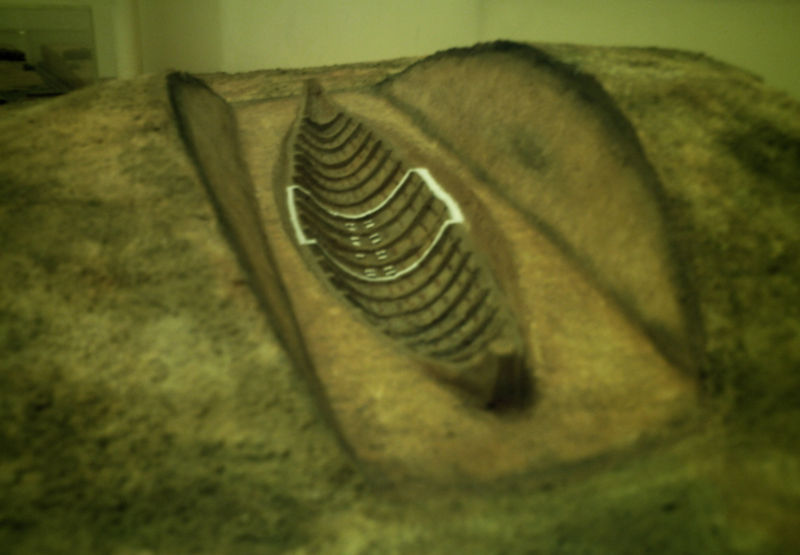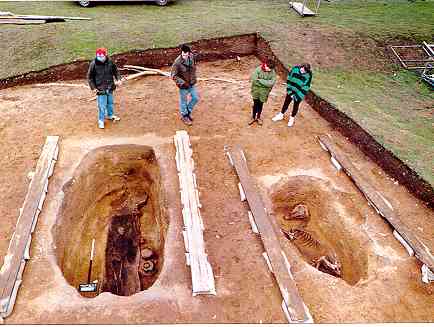
The intitial excavation, August 1939 (shot by H.J. Phillips).
| - 1926 Edith May Pretty and her husband move to Sutton Hoo estate.
- 1937 Edith Pretty approaches Ipswich museum and asks for the assistance of an archaeologist to excavate suspect looking mounds on the property.
- 1938 A local archaeologist, Basil Brown, who was attached to Ipswich museum, arrives to work for Edith Pretty. Against her wishes, he decides not to open what is now known as mound 1. Instead he opens mounds 2, 3 and 4 in the first season. In mound 2 he finds ship rivets and fragments of metal and glass artifacts.
- Early 1939 Brown returns to dig a trench through mound 1. He discovers soil stained by wood and undisturbed iron ship rivets.
- Late 1939 Charles Philips, from the Office of Works, leads a team to fully excavate mound 1. They discovered an undisturbed burial chamber below the intact ghost remains of what was a ship. They uncovered gold and silver treasure dating back to the 7th century.
- 1965-1971 Rupert Bruce-Mitford led a British Museum research team to fully re-excavate mound 1 and made a plaster cast mould of the outline of the ship. They also investigated mound 5.
- 1983-1992 Professor Martin Carver, of the British Museum led another team using newly developed methods to excavate Mounds 2, 5, 6, 7, 17 and 18. Mound 17 was found to contain the remains of a young man complete with grave goods and alongside it, a separate grave containing what is believed to be his horse.
| 
Ghost image of ship revealed during initial excavation, August or September 1939 (shot by H.J. Phillips).
|





